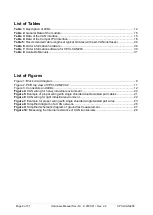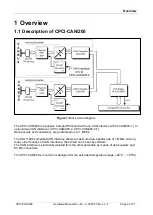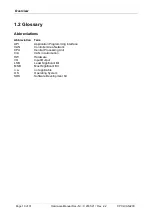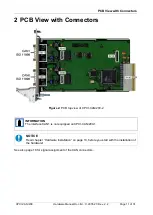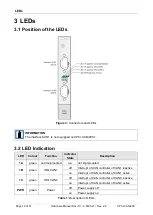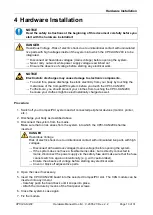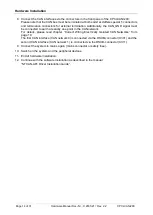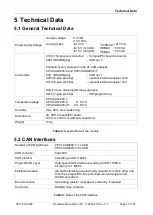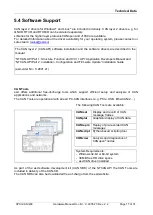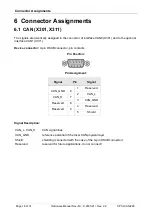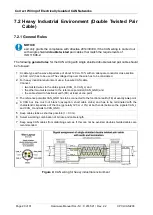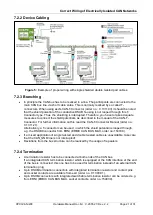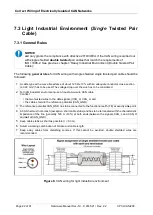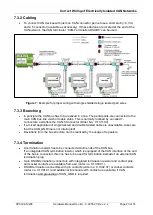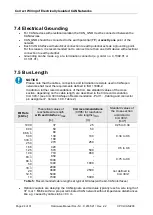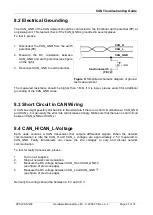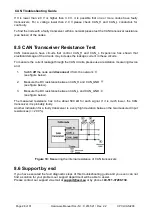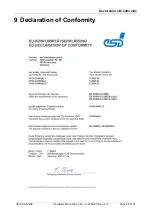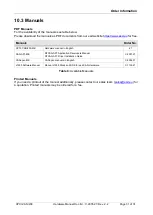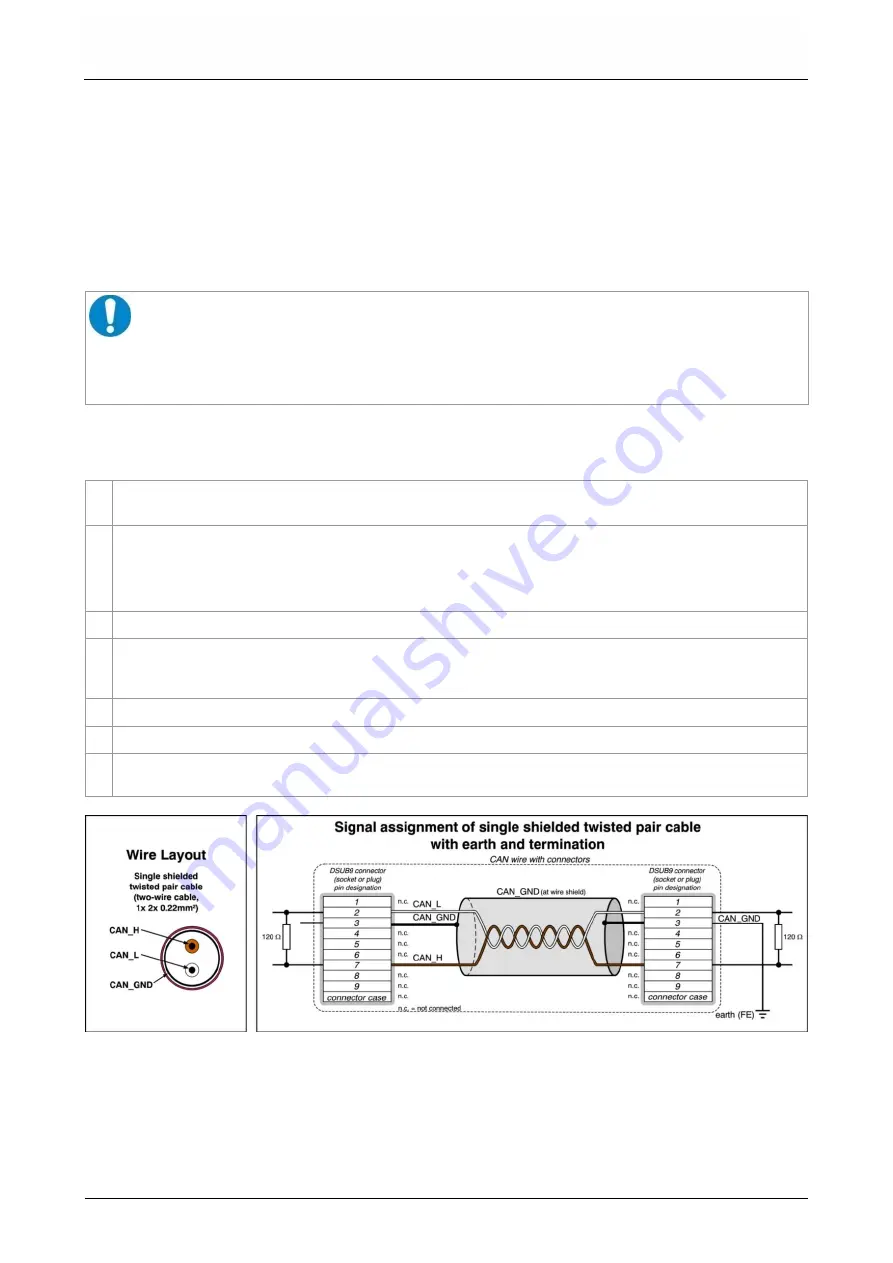
Correct Wiring of Electrically Isolated CAN Networks
Page 22 of 31
Hardware Manual Doc.-Nr.: C.2035.21 / Rev. 2.2
CPCI-CAN/200
7.3.1 General Rules
NOTICE
esd only grants the compliance with directive 2014/30/EU, if the CAN wiring is carried out
with single shielded
double twisted
pair cables that match the requirements of
ISO 11898-2. See previous chapter: 'Heavy Industrial Environment (Double Twisted Pair
Cable)'.
The following
general rules
for CAN wiring with single shielded
single
twisted pair cable should be
followed:
1
A cable type with a wave impedance of about 120
Ω
±
10% with an adequate conductor cross-section
(
≥ 0.22 mm
²
) has to be used. The voltage drop over the wire has to be considered.
2
For light industrial environment use at least a two-wire CAN cable.
Connect
•
•
the two twisted wires to the data signals (CAN_H, CAN_L) and
the cable shield to the reference potential (CAN_GND).
3
The reference potential CAN_GND has to be connected to the functional earth (FE) at exactly
one
point.
4
A CAN net must not branch (exception: short cable stubs) and has to be terminated with the characteristic
impedance of the line (generally 120
Ω
±
10%) at both ends (between the signals CAN_L and CAN_H
and
not
at CAN_GND).
5
Keep cable stubs as short as possible (l < 0.3 m).
6
Select a working combination of bit rate and cable length.
7
Keep away cables from disturbing sources. If this cannot be avoided, double shielded wires are
recommended.
Figure 6:
CAN wiring for light industrial environment
7.3 Light Industrial Environment (Single Twisted Pair
Cable)

